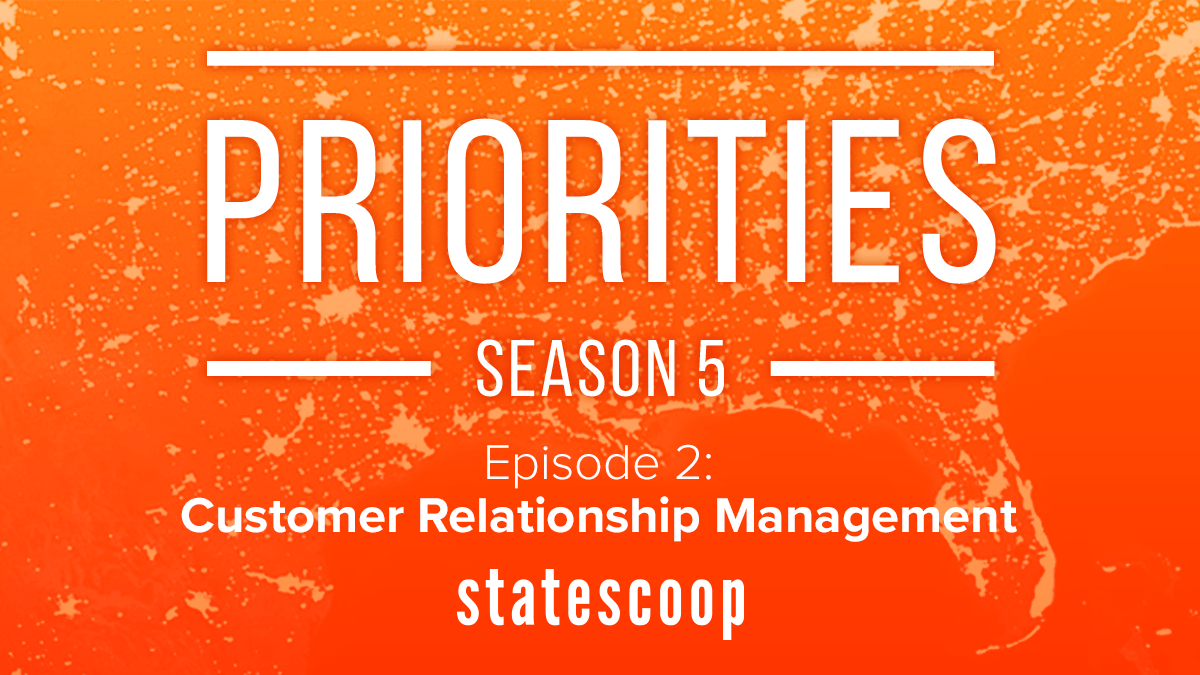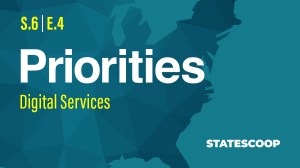
Great user experience starts with understanding customers, says Colorado CIO
The ideal user experience — or a “delightful” one, to borrow the preferred nomenclature of Colorado Chief Information Officer Theresa Szczurek — isn’t best accomplished as an afterthought. Rather, the degree to which government’s digital services succeed can be traced up to the highest levels of decision-making and planning, from an organization’s mission and principles to seemingly unconnected back-office IT functions.
In the latest episode of StateScoop’s Priorities podcast, Szczurek says that in Colorado, creating a great user experience comes from interagency collaboration around common goals, whether that’s to serve internal agency customers or Colorado’s 5.7 million residents.
“It’s a huge job to keep all our employees throughout the state in 1,300 locations happy,” Szczurek says of customer relationship management. “I think it’s really important to understand who the customers are so you can then understand what their needs are. So I like to talk about the ‘P’ of marketing, the ‘P’ being the people, or our customers.”
Well before the Colorado Governor’s Office of Information Technology serves technology services to its agency customers or state residents, Szczurek’s team meets with agency stakeholders to understand how it can best serve as the “conduit to their IT services,” she says. This work is facilitated by various agency IT directors who Szczurek says are co-hired by OIT and the agency in which they’re placed.
“The IT director, according to our Gov. [Jared] Polis’ direction, really should be serving on the executive staff of the agency and therefore understand all of the needs,” Szczurek says. “These IT directors work to establish a five-year IT roadmap that really looks at where the agency is now with regards to its technology and forecasts the needs going forward. They also work to see if there’s commonalities across agencies so we can determine if there’s an enterprise solution that best serves many agencies, rather than having one-offs.”
More of OIT’s mission is reflected in one of the mottos the state has adopted — “Anywhere, Anytime” — which Szczurek says convenes the state in an interest in providing digital services that are “user-friendly and accessible to all.” She says 80 percent of the state’s residents have a mobile device, which is part of what prompted the launch of Colorado’s digital services application, myColorado, last October.
The app is the state’s new online hub for a growing collection of services, currently allowing users to register to vote, renew their driver’s licenses, among other functions. The state also added digital identification functionality last year, and Szczurek says the state is monitoring regulations being rolled out by the Department of Homeland Security and the Transportation Security Administration so the state will be ready to implement mobile driver’s licenses when the standards are done being developed.
User experience isn’t always delightful, like when systems remain glitchy for extended periods or when hackers exploit their vulnerabilities. Szczurek cited the Colorado Benefits Management System as a case in which the state was able to improve the service quality of a legacy system, relaunching it on modern cloud-based platforms last August. Despite some initial hiccups upon relaunch, it’s certainly an upgrade from the system it replaced, which in 2011 was called “a disaster” by two University of Denver researchers.
The system’s front-end interface that allows users to apply and check if they’re eligible for various benefits, called the Program Eligibility and Application Kit, is accessible via mobile device, where 1.4 million Coloradans can manage their accounts.
“That is one example of a legacy application so important to so many people in the state that we have transformed,” Szczurek says. “We have in phase one of this moved into the cloud. We were one of the first states to move an application of this magnitude to the cloud — like 243 servers.”
But CBMS represents just a sliver of the 1,100 services the state offers. And while Szczurek says Colorado’s trend has been to consolidate and eliminate unnecessary services, it’s also planning some news ones, both for public consumption and to improve the efficiency of the work going on behind the scenes.
The state is researching the application of chatbots and blockchain technology, and there are also plans to run a “blockchain bountython,” she says, in which the public will be invited to identify new ways to improve state processes using the distributed-ledger technology.
“When you think about our mission — ‘Expanding the lives of all Colroradans’ — in one sense, we are keeping all the systems operating,” Szczurek says. “That’s the infrastructure, the network, the voice and data centers. We are advancing these applications, keeping all information flowing, we’re transforming the technology with digital transformation, securely.”
This episode of Priorities is part of StateScoop and EdScoop’s special report on user experience. Read the rest of the report.
Produced in partnership with the National Association of State Chief Information Officers, Priorities dives deep into each of the top 10 priorities of state CIOs outlined in NASCIO’s annual list.
Listen to archived episodes of Priorities from Season 5 (2020), Season 4 (2019), Season 3 (2018), Season 2 (2017) and Season 1 (2016). Catch all of StateScoop’s podcasts on Soundcloud, Apple Podcasts, Spotify, Google Play, Stitcher or Alexa’s TuneIn.


